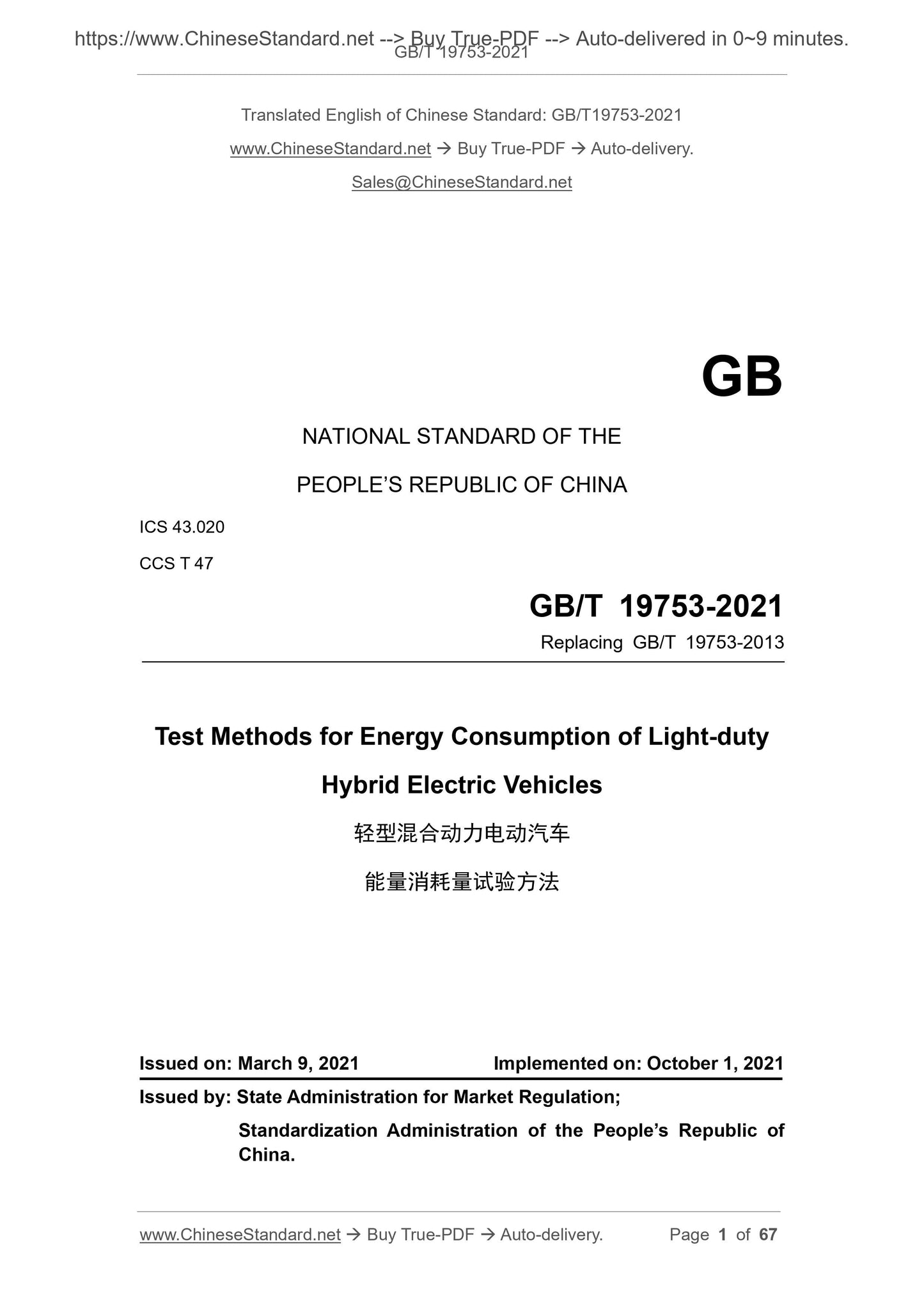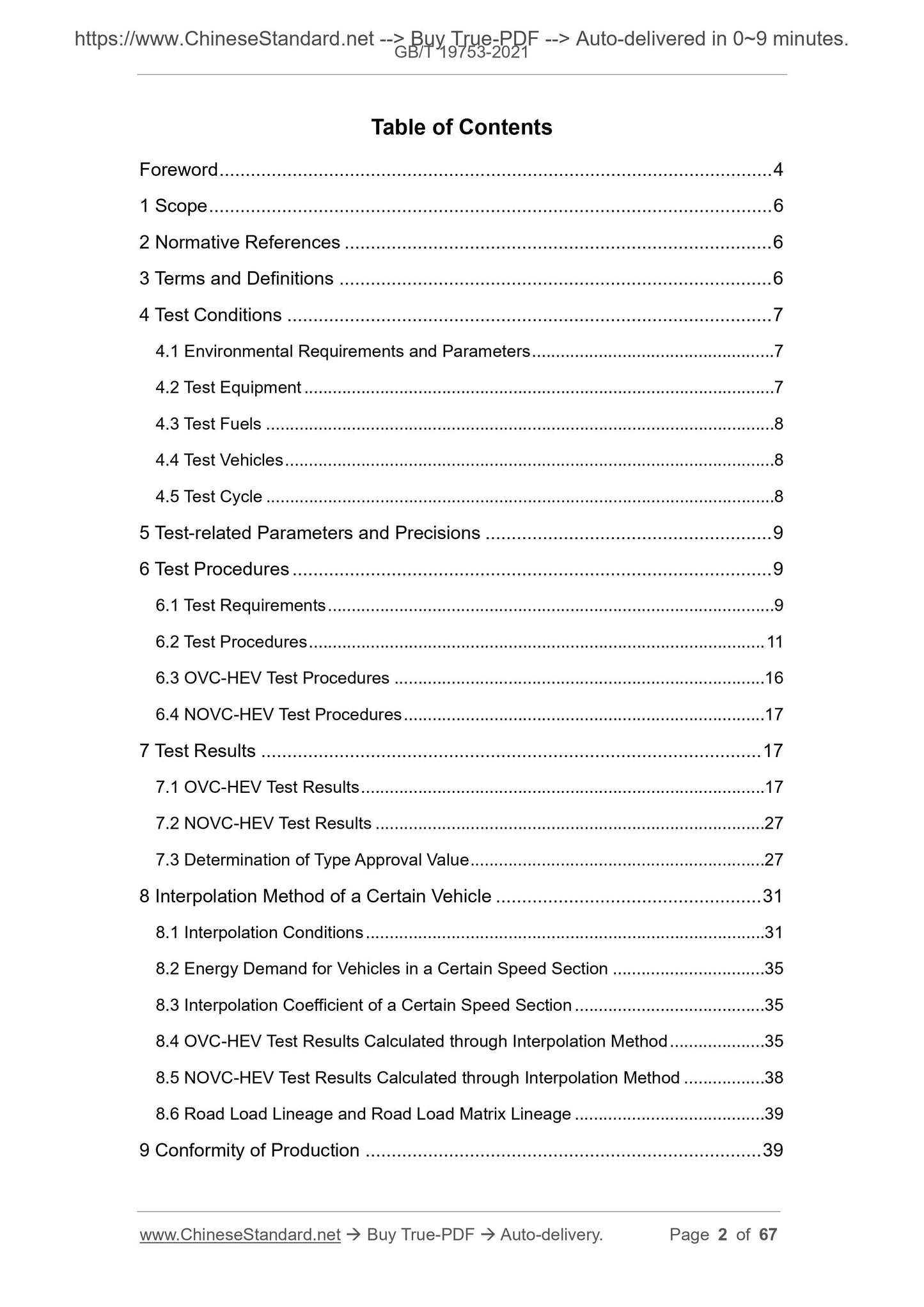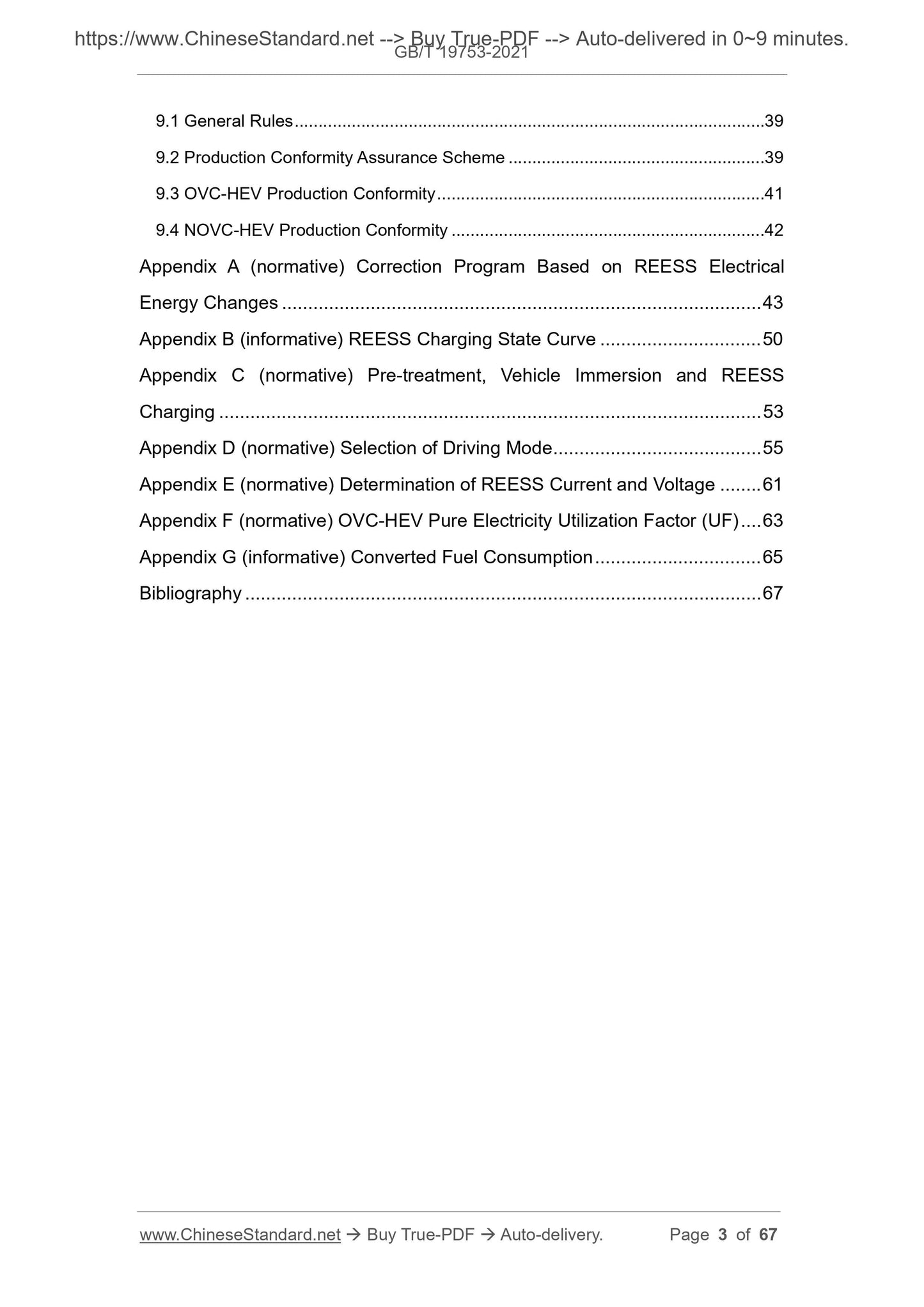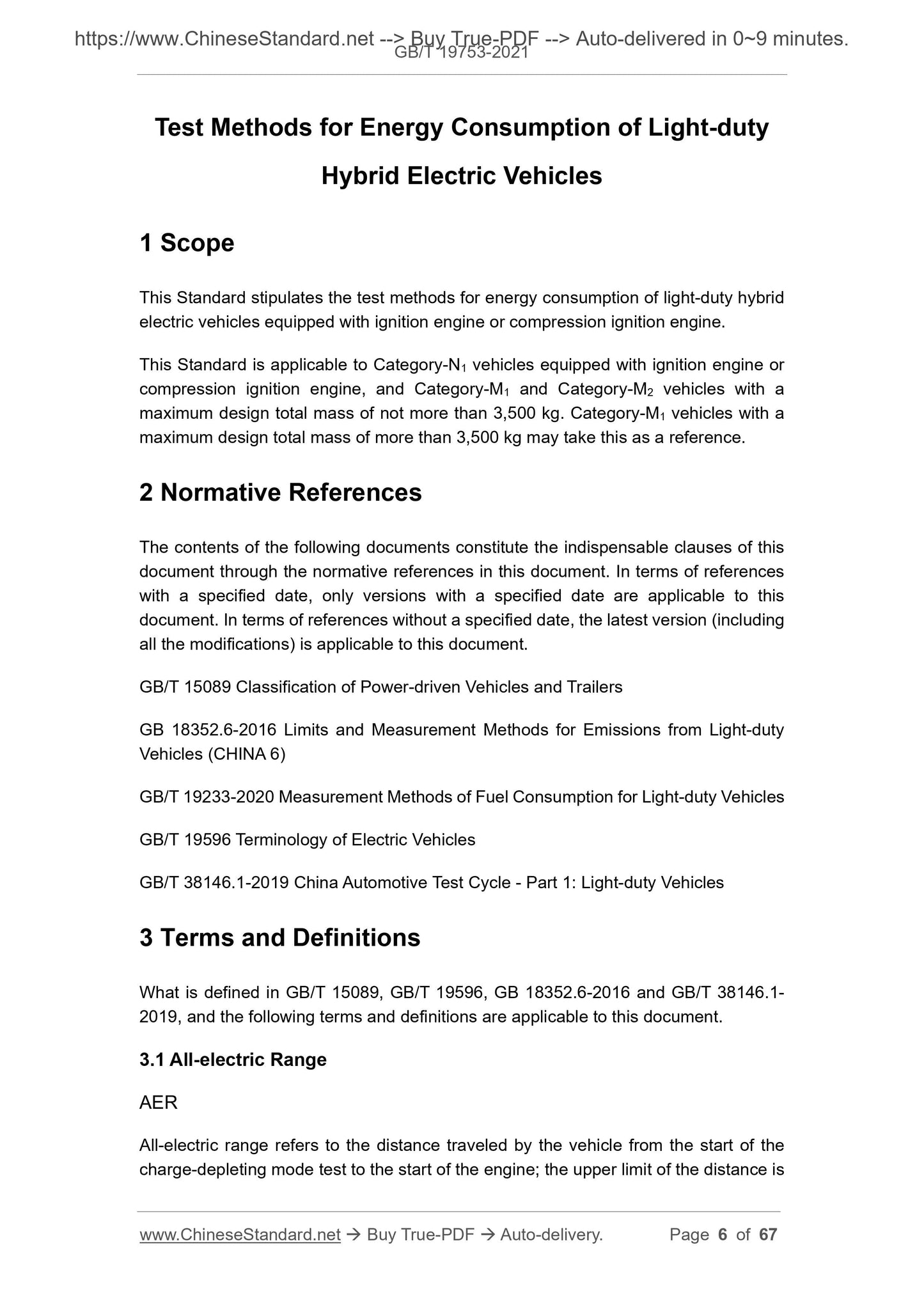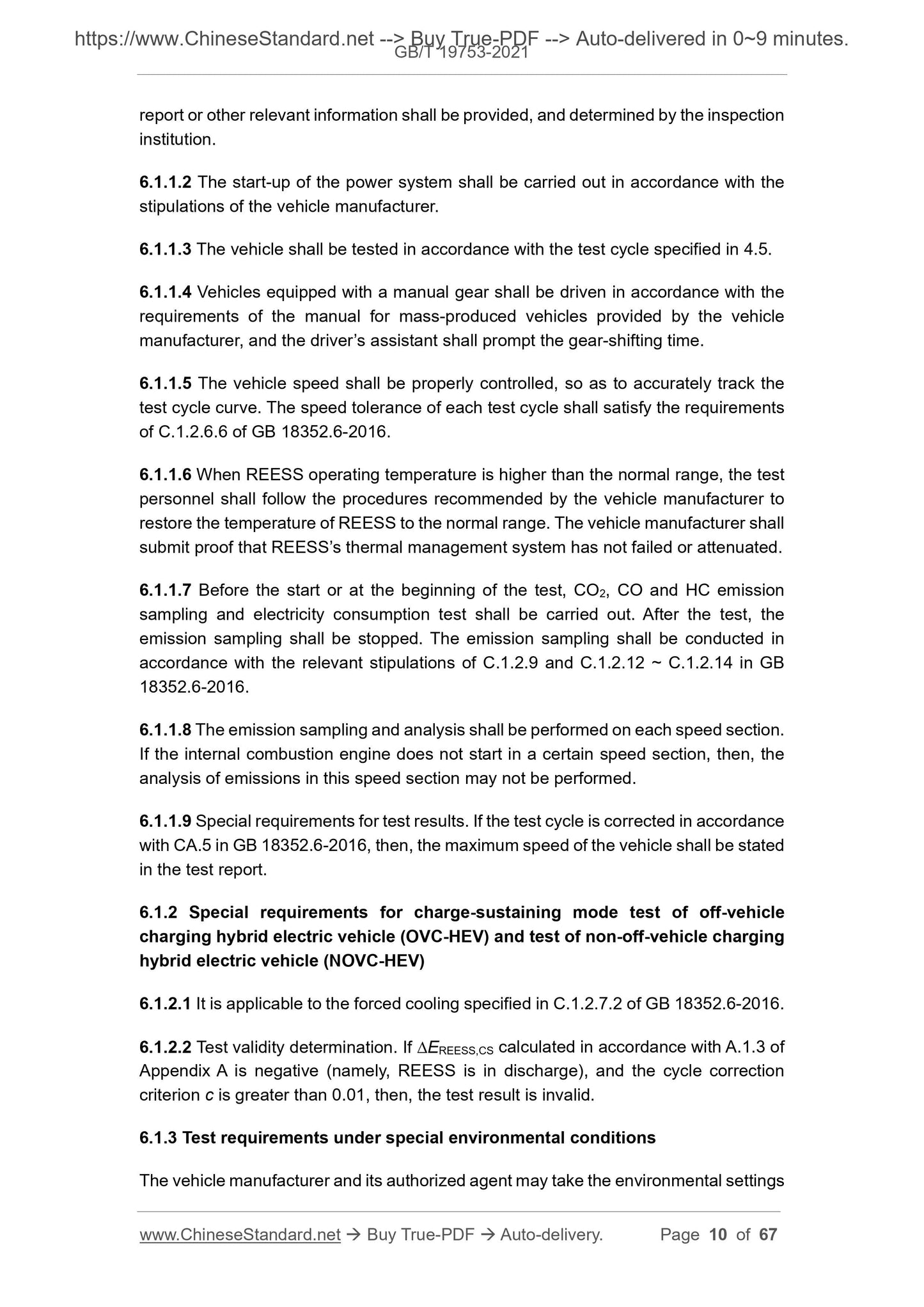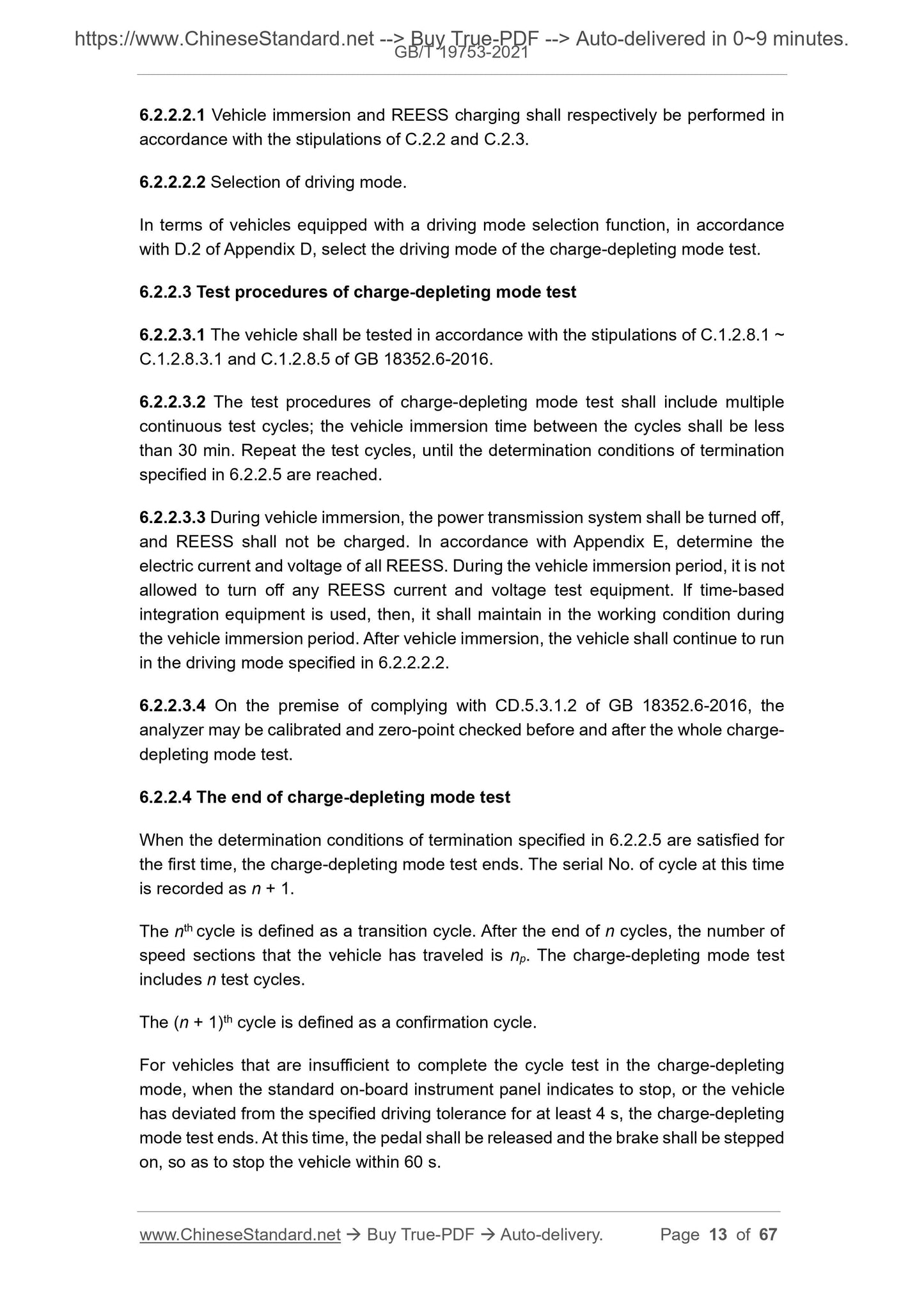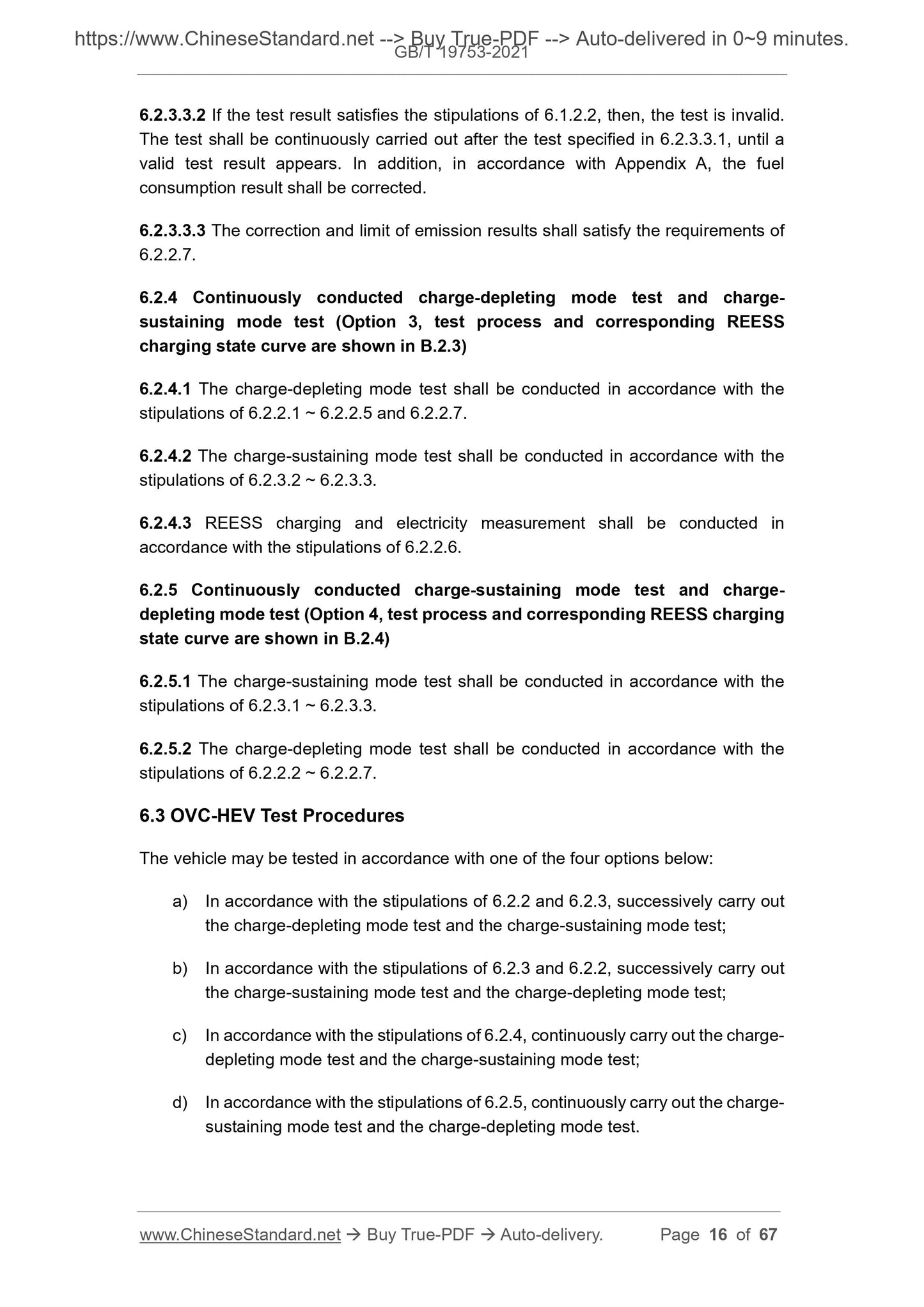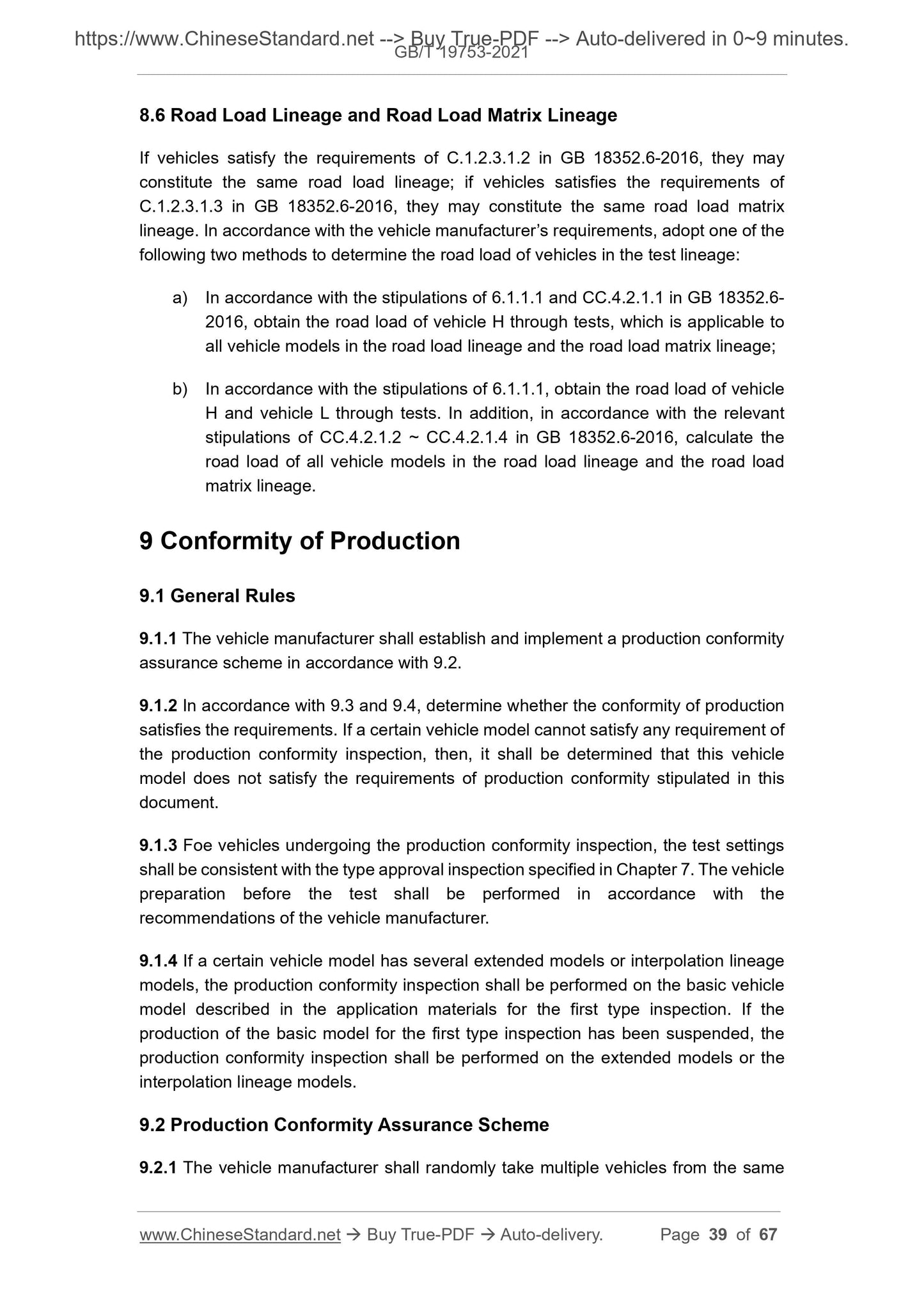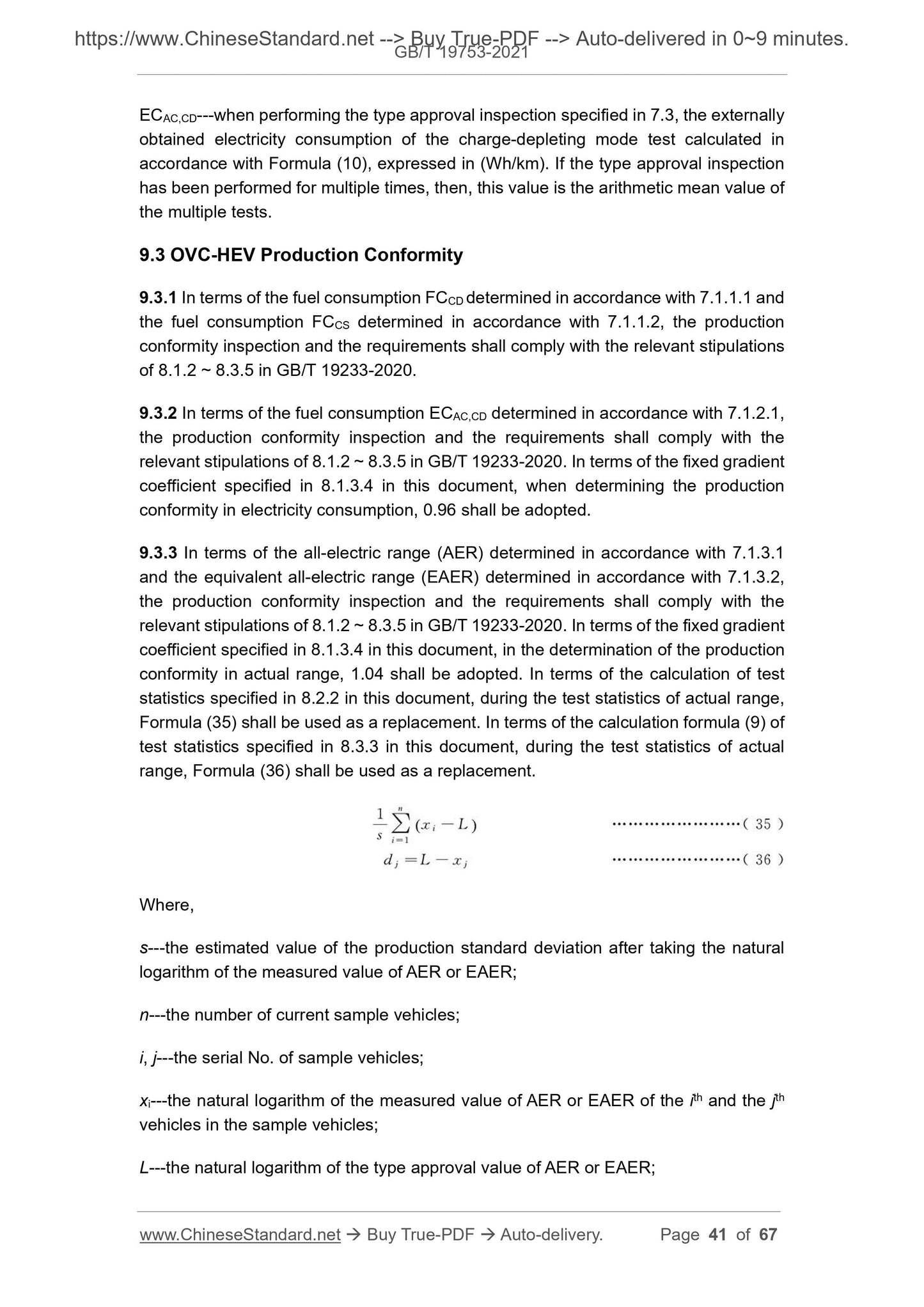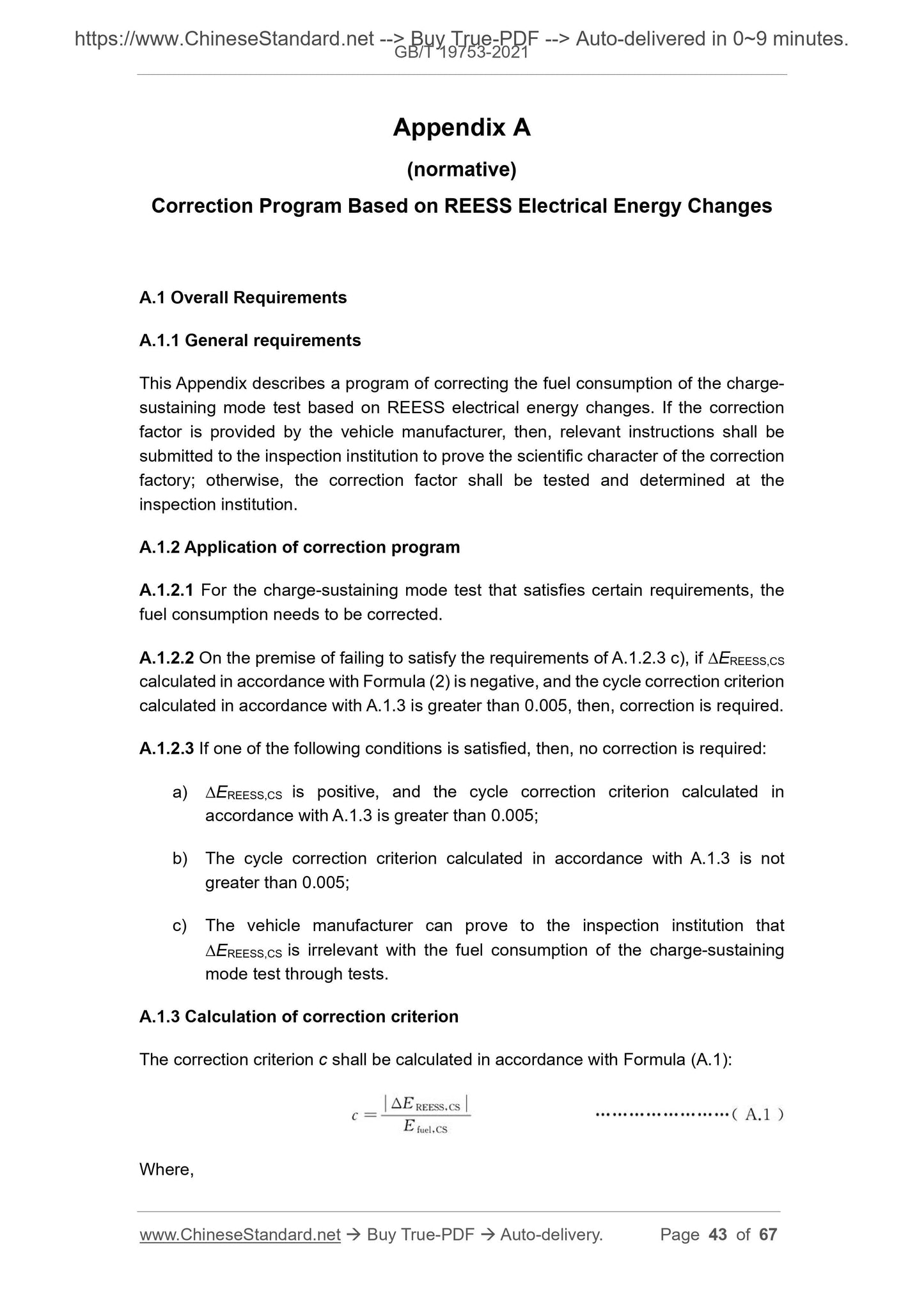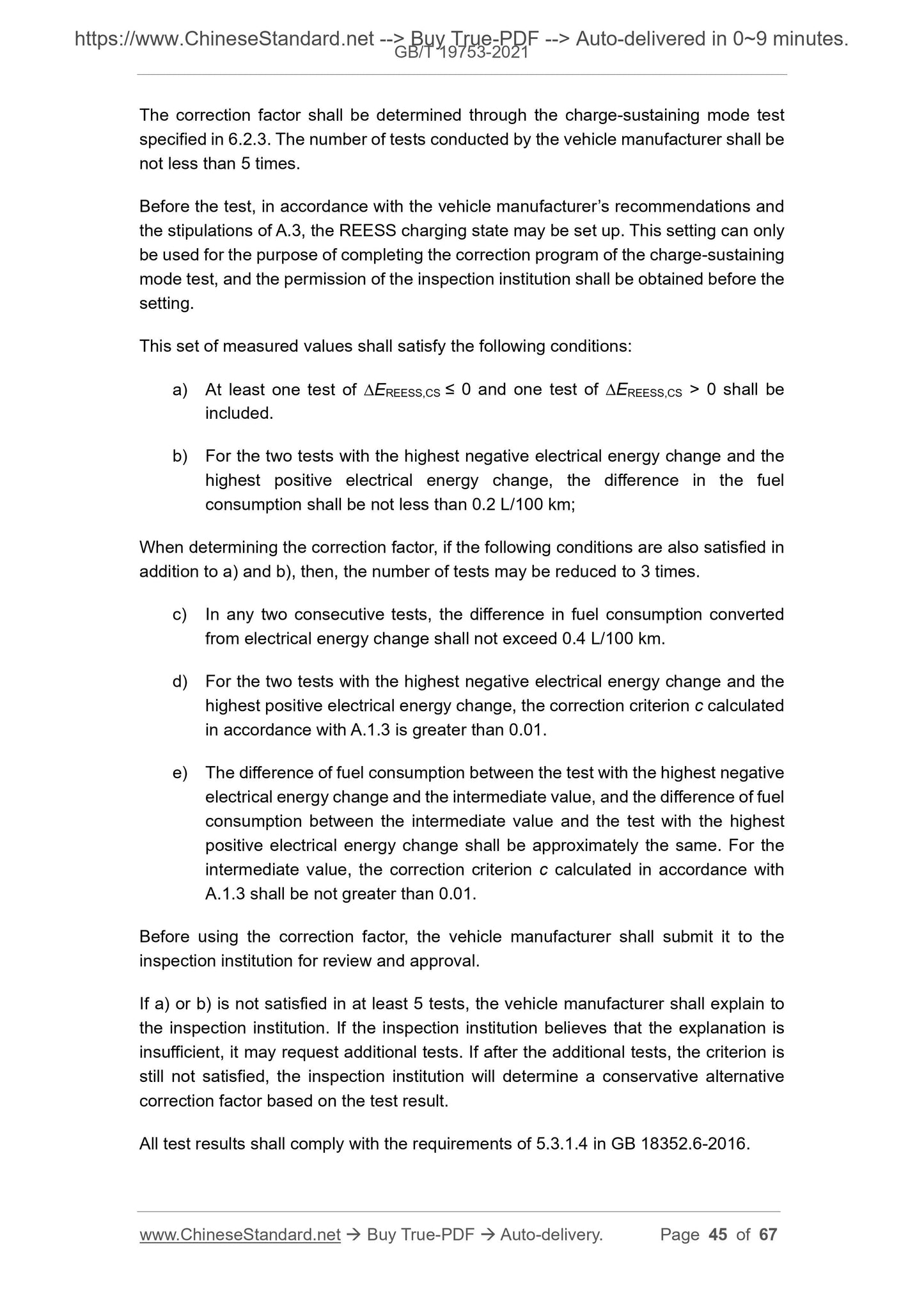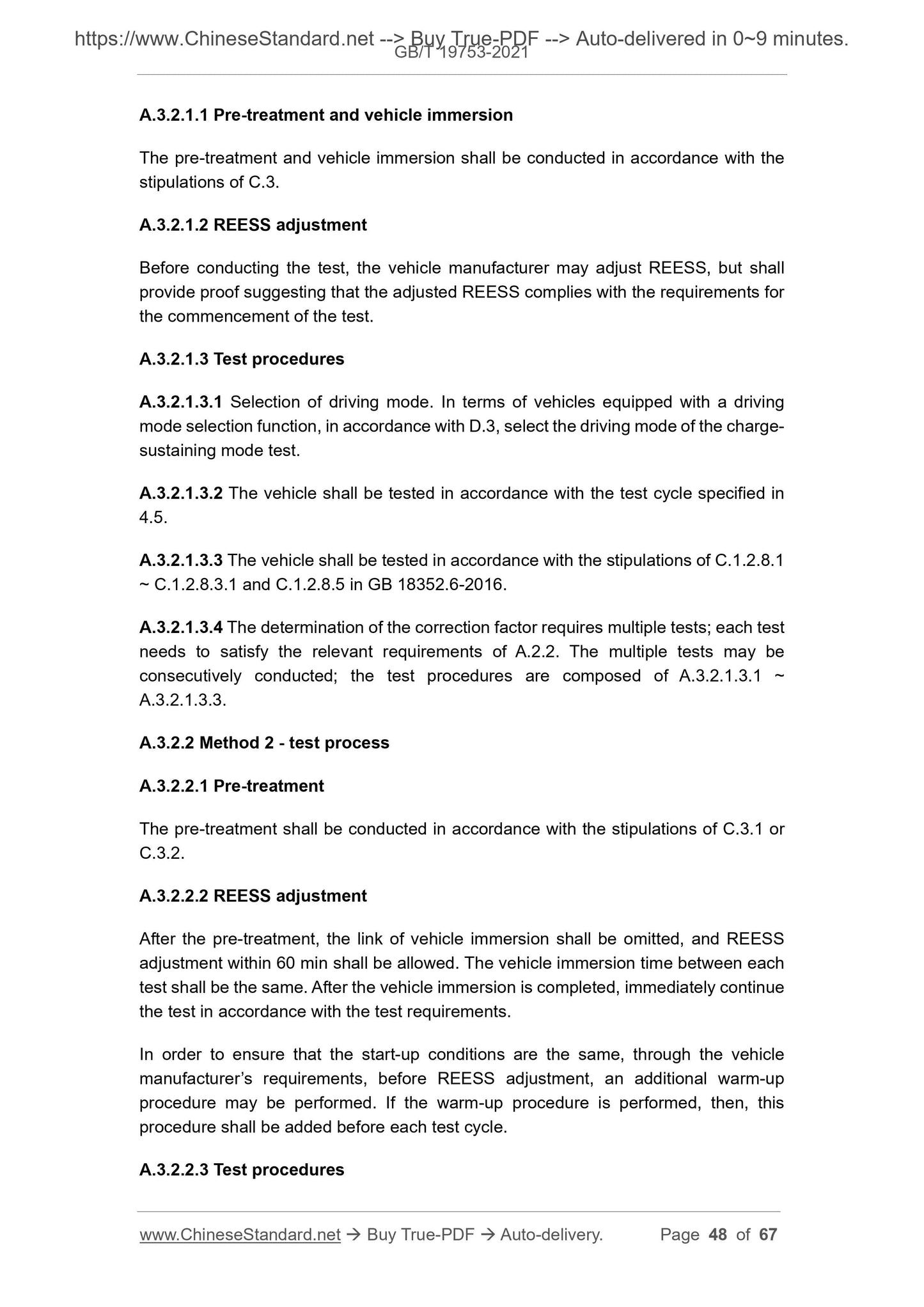1
/
of
12
www.ChineseStandard.us -- Field Test Asia Pte. Ltd.
GB/T 19753-2021 English PDF (GB/T19753-2021)
GB/T 19753-2021 English PDF (GB/T19753-2021)
Regular price
$650.00
Regular price
Sale price
$650.00
Unit price
/
per
Shipping calculated at checkout.
Couldn't load pickup availability
GB/T 19753-2021: Test Methods for Energy Consumption of Light-duty Hybrid Electric Vehicles
Delivery: 9 seconds. Download (and Email) true-PDF + Invoice.Get Quotation: Click GB/T 19753-2021 (Self-service in 1-minute)
Newer / historical versions: GB/T 19753-2021
Preview True-PDF
Scope
This Standard stipulates the test methods for energy consumption of light-duty hybridelectric vehicles equipped with ignition engine or compression ignition engine.
This Standard is applicable to Category-N1 vehicles equipped with ignition engine or
compression ignition engine, and Category-M1 and Category-M2 vehicles with a
maximum design total mass of not more than 3,500 kg. Category-M1 vehicles with a
maximum design total mass of more than 3,500 kg may take this as a reference.
Basic Data
| Standard ID | GB/T 19753-2021 (GB/T19753-2021) |
| Description (Translated English) | Test Methods for Energy Consumption of Light-duty Hybrid Electric Vehicles |
| Sector / Industry | National Standard (Recommended) |
| Classification of Chinese Standard | T47 |
| Word Count Estimation | 46,428 |
| Issuing agency(ies) | State Administration for Market Regulation, China National Standardization Administration |
Share
